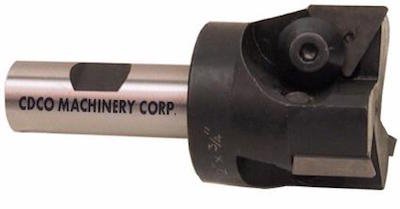Hogging is kinda a relative term and subject to many variables that can drastically reduce material removal rate.
Most of the smaller bench top you are not going to be doing any hogging and increased material rates are increased mostly by attention to set up, feed and speeds, cutter and cutter quality.
Every single machine out there has it's limits, we just have to work around/with them efficiently.
Seems my 2.5 face mill has a max DOC of .200in which I never use.
My normal course for if large amounts of material are needing removed is first, find material that is dimensionally closer
Next is a carbide rougher to less then finish depth by about .015 then face mill that.
That is using CNC, for a manual machine I likely would just face mill and repeat as needed to depth.
Some of these high end face mills can absolutely fly through material, I have to rely on something of less quality.
Franko,
Work towards getting a 3 Fl variable helix coated for aluminum cutting rougher, don't let the word rougher fool you, they can leave a very nice finish, you'll love it, after 1/2" they get scary pricey though.
This is where my last one came from after snapping my other one
http://www.lakeshorecarbide.com/standardlengthcornerradiusroughfinishgeometry.aspx
Most of the smaller bench top you are not going to be doing any hogging and increased material rates are increased mostly by attention to set up, feed and speeds, cutter and cutter quality.
Every single machine out there has it's limits, we just have to work around/with them efficiently.
Seems my 2.5 face mill has a max DOC of .200in which I never use.
My normal course for if large amounts of material are needing removed is first, find material that is dimensionally closer
Next is a carbide rougher to less then finish depth by about .015 then face mill that.
That is using CNC, for a manual machine I likely would just face mill and repeat as needed to depth.
Some of these high end face mills can absolutely fly through material, I have to rely on something of less quality.
Franko,
Work towards getting a 3 Fl variable helix coated for aluminum cutting rougher, don't let the word rougher fool you, they can leave a very nice finish, you'll love it, after 1/2" they get scary pricey though.
This is where my last one came from after snapping my other one
http://www.lakeshorecarbide.com/standardlengthcornerradiusroughfinishgeometry.aspx



